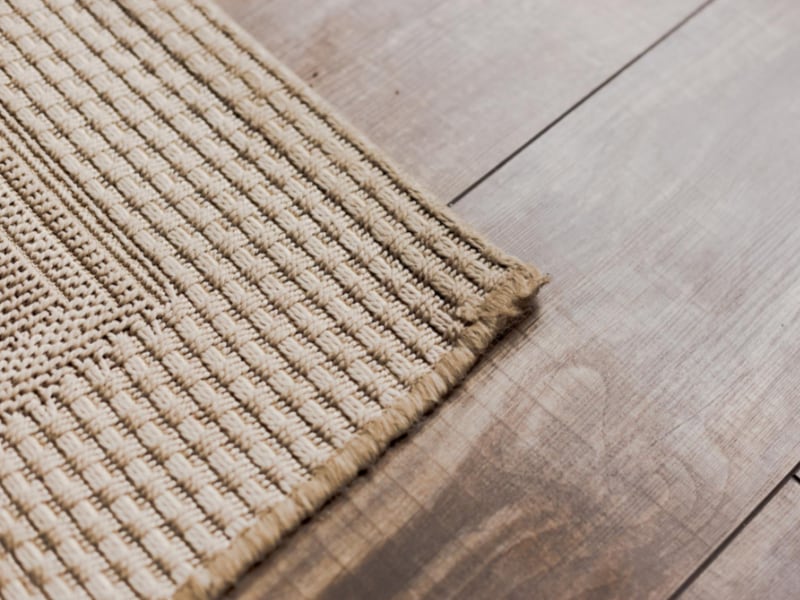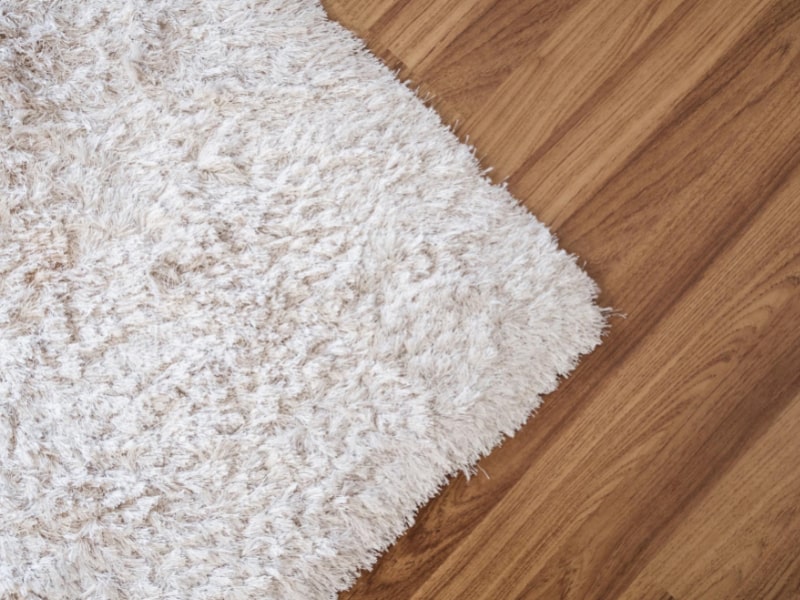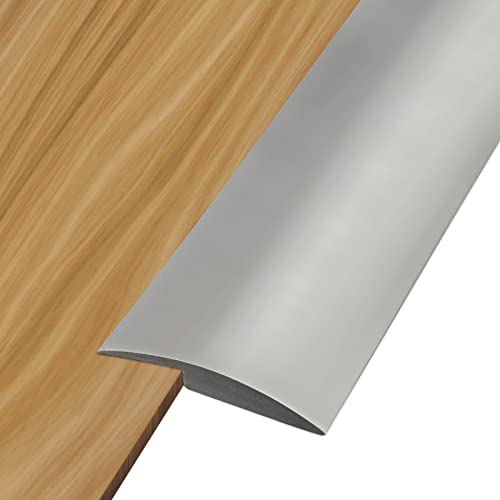Not all homes have perfectly flat floors. All homes will have some bumps or thresholds between rooms, especially when you have different floor types.
If that’s the case, can Roomba go over bumps and thresholds?
This article will answer all your questions about whether the Roomba can go over bumps, thresholds, transitions, and more.
Can Roomba Go Over Bumps?
All Roomba models can go over any bumps that are less than ⅝ inches (1.6 cm) high. If there’s a bump that’s bigger than that, Roomba won’t be able to climb over it.
The reason why is because the robot has wheels on its bottom, which means that it needs to roll up onto something before it can move forward. Otherwise, the bottom of the Roomba will hit the bump and not be able to go anywhere as it’s stuck on the bump.

Can Roomba Go Over Thresholds?
Roombas can easily go over any thresholds that are no higher than ⅝ inches (1.6 cm). The reason for this is because the wheels on the bottom of the Roomba won’t allow it to roll over them.
However, if the threshold is taller than this, then the Roomba won’t be able to go over it. This is because the wheels on the Roomba aren’t tall enough to clear the threshold.
Can Roomba Go Over Transitions Or Transition Strips?
Transitions are basically the area where you go from one type of flooring to another. Transition strips are usually found at the bottom of doorways to help transition between two rooms or two types of flooring.
Roombas can go over transitions and transition strips that are less than ⅝ inches or 1.6 cm high. However, they cannot go over anything that’s taller than that, so you’ll want to note of the height when you’re buying transition strips or creating transitions between two different floor types.
If there is a small gap between the floors, put a small piece of carpet, a mat, or build a small slope on the floor to reduce the height of that gap.
How to Get Roomba Over Thresholds
The best way of getting a Roomba over thresholds is to install a floor transition strip.
This works well for transitions from rooms with hardwood floors to rooms with carpet. You can also use these transition strips with rugs. It’s best to use a non-black strip because the sensors may potentially have trouble with the darkness.
These are options to look at. No matter what you choose, make sure that they are no higher than ⅝ inches or 1.6 cm.
Can Roomba Go Over Rugs?
The difference in height from a carpet to a rug or a wooden surface to a rug is more like a bump than a threshold. But as long as it’s less than ⅝ inches or 1.6 cm high, the Roomba won’t have an issue.
There is one catch though with high-pile rugs and carpets. If the fibers are longer than ⅝ inches or 1.6 cm, there’s still a chance the Roomba can occasionally get stuck. But usually, the fibers will bend under the weight of the Roomba, so the wheels can still move.
On the budget Roomba models, like the 600 series models, they have bristle brush rollers, and those can get caught in the rug and carpet fibers. The higher-end models have rubber brush rollers that will not get stuck in the fibers.
- Learn about Cleaning Roomba Brushes.
Roomba models that have Carpet Boost or Power Boost can clean carpets and rugs than older models that are primarily designed for hardwood floors and smooth surfaces.
To get the vacuum cleaner to do a deep clean of the floor, it needs to have powerful suction that can suck up all the dust and debris hidden in and under the threads of the carpet.
The Roomba’s ability to clean carpets is limited and older models may struggle to remove the dirt and debris from carpets. It doesn’t mean that Roomba won’t work at all; it’s just not the best choice if you have thick rugs and carpet.
The best Roomba models for carpets are the i, j, and s series models.

Tips for using a Roomba on a Rug
When you schedule a separate cleaning time for an area with rugs or thick carpet, the Roomba won’t have a hard time transitioning from floor type to floor type. You can use the Power mode or the Carpet mode to deep clean your rugs and carpets, but manual intervention is needed to avoid getting the Roomba stuck.
If you have an i, j, or s series Roomba, you can create Keep Out Zones around the thick rugs and carpet.
Why Do Roombas Hate Black Floors, Carpets, and Rugs?
Black floors, carpets, and rugs don’t show up well on cameras and sensors. That means the Roomba has no idea where the edges are or how big the room is. So the Roomba will spend extra time trying to find its way out of the room or off the rug. This makes it take much longer to clean the whole house.
To solve this problem, add some bright colors to the floors, carpets, or rugs. Make sure to choose colors that contrast with the color of the rest of the room. Also make sure to keep the furniture away from the edge of the room.
Learn more about How Roomba Works in the Dark.
How to Fix the Roomba Black Carpet Issue
You can try to fix the black carpet issue a few different ways.
1. Foil or Tape Fix – Roomba users should use the foil trick to temporarily fix the problem. Covering the LED sensors with aluminum foil, electrical tape, or HVAF tape will block the infrared light and prevent the robot from sensing the dark patterns.
This method works well only if you don’t have any stairs nearby, so robot doesn’t fall into a hole or roll over an edge. You’ll need to cover the holes and edges with tape and/or paper.
2. Reposition Cliff Sensors – Cliff sensor fix is a simple method to make your Roomba work again. The first step is to dismantle the robot. Then you need to reposition the transmitter and the receiver to point directly at each other. Finally, you need to re-attach everything.
When taking apart a robot, make sure to remove the transmitters and receivers first. Also, do not use the robot to clean top floors or near stairs.
3. Replace Rugs and Carpets – Replace dark rugs and carpets with lighter ones. Dark rugs and carpets can be tripped by the cliff sensors.
Can Roombas Climb Stairs?
Unfortunately, Roomba robot vacuums cannot climb stairs, but it can easily fall down stairs if its cliff sensors are not working properly. Falling down stairs would probably end up with a broken Roomba.
Maybe iRobot will eventually create a Roomba with climbing abilities. Until then, you’ll need to pick up the Roomba and carry it upstairs if you want the Roomba to clean another story of your home.
Can Roombas Vacuum Under Furniture?
Roombas are robot vacuums that clean your floors. They are designed to fit under tables and other furniture. They are generally very reliable, but sometimes they get stuck or get wedded under furniture. This happens because of a faulty bumper sensor. When this happens, the robot tries to back up and gets stuck.
You should buy adjustable furniture risers if your furniture has low clearance.
Learn more about How to Fix Roomba From Getting Stuck.
Roomba Going Over Bumps and Thresholds Final Thoughts
There’s nothing wrong with having bumpy floors or thresholds. The Roomba shouldn’t have a problem in the majority of cases.
However, if you notice that the robot is struggling to clean over bumps and thresholds, then you have a variety of potential fixes to try.
Here are other Roomba articles that you might be interested in:

